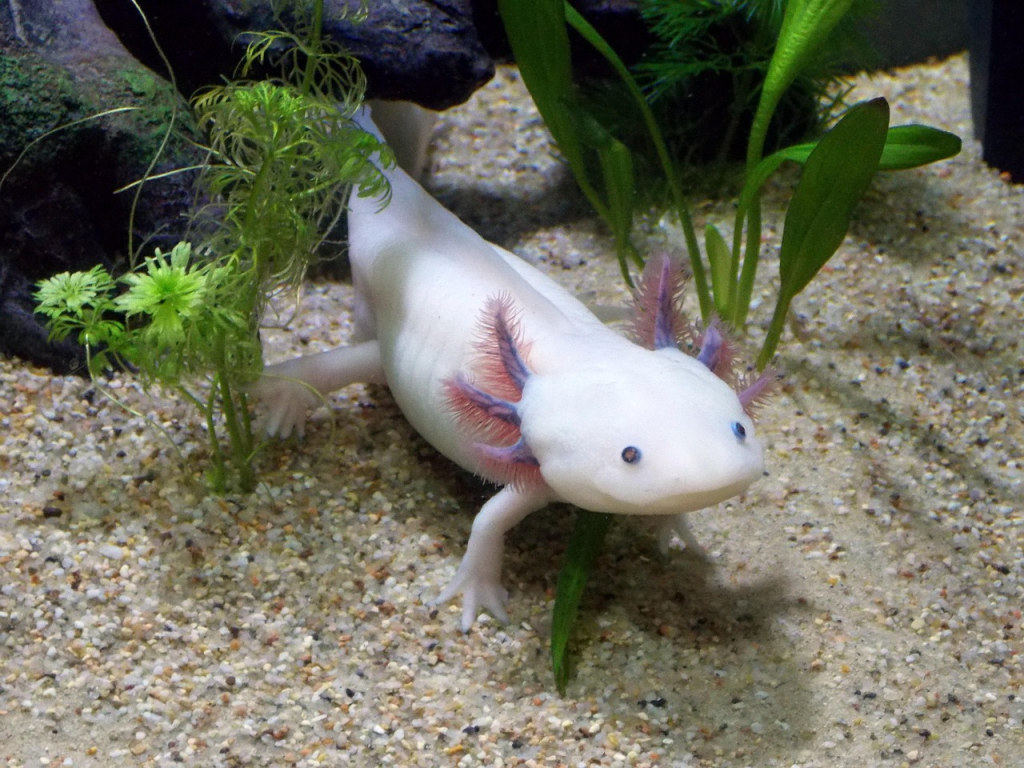Do Cats Eat Axolotls? How to Keep Your Axolotl Safe from Curious Cats
If you’re an Axolotl owner or enthusiast, you may have wondered about the safety of your little aquatic friend, especially when it comes to other pets in the house.
One question that often pops up is, do cats eat Axolotls? You know that cats can be curious and sometimes get into things they shouldn’t. But is an Axolotl one of them? Let’s talk about it in detail so you can better protect your pets.
This will help you understand how cats and Axolotls interact, and what steps to take to keep both happy and safe.
The Basics: What Cats Eat

Before we get into whether cats can or will eat Axolotls, it’s important to know a bit about what cats normally eat. Cats are obligate carnivores, which means they need a meat-based diet to thrive.
They primarily hunt smaller prey, like rodents or birds, in the wild. However, when they’re at home, they eat pet food designed to give them all the nutrients they need.
Estimates suggest that fewer than 1,200 axolotls remain in the Xochimilco Lake complex as of 2009.
While it’s common for cats to have a strong hunting instinct, they’re also quite lazy when they’ve been well-fed. So, it’s not always the case that your cat is actively hunting everything in sight. Still, some cats are more curious than others, and they may check out the creatures in your tank.
Can Cats Actually Eat Axolotls?
Now, let’s get to the real question: Do cats eat Axolotls? In general, no, cats won’t typically target Axolotls as food. Axolotls, being aquatic and relatively slow-moving, don’t match the usual prey that cats go after. However, there are a few things to keep in mind when it comes to cats and Axolotls.
Cats Are Curious, Not Always Hungry
While cats are carnivores, their diet is usually controlled by their owners. They may sniff around the tank or show interest in the movements of your Axolotl, but that doesn’t necessarily mean they want to eat it.
Cats are more likely to be intrigued by the motion in the water or the new creature they see. It’s more about curiosity than hunger.
Axolotls Are Not Easy Prey for Cats
Unlike a small rodent or bird, Axolotls are slow-moving and stay in water, which makes them less accessible to most cats. Their soft bodies and delicate features aren’t appealing to a cat’s usual hunting instincts either.
Axolotls also have the ability to regenerate limbs and body parts, so if a cat did manage to harm one, the axolotl might recover, but it would be a stressful experience for both animals.
Potential Danger from Inquisitive Cats
Even if cats don’t usually try to eat Axolotls, they could still pose a danger to them. Cats have sharp claws and teeth, and an overly curious cat could cause stress to an Axolotl simply by tapping at the tank or trying to reach inside. This can lead to injury or stress, which could affect your Axolotl’s health.
A 2019 assessment indicated that only between 50 and 1,000 axolotls are left in their natural habitat.
The Size Factor
Size can also play a role. If your Axolotl is quite small and your cat is particularly curious, there’s a possibility that the cat might try to grab it. However, in most cases, Axolotls are larger than most small animals that cats typically target.
This makes them less likely to be seen as prey. If you’re worried about the size difference, consider keeping your Axolotl in a larger tank or in an area where the cat can’t easily reach.
How to Protect Your Axolotl from Cats
Even though it’s unlikely your cat will eat your Axolotl, it’s always best to take precautions to keep both pets safe. Here are a few practical steps you can take to minimize any risk:
Keep the Tank Secure
One of the easiest ways to protect your Axolotl is by ensuring the tank is securely closed. If your cat is the curious type, they might try to explore the tank, especially if it’s not properly covered. Using a mesh lid or aquarium cover is a good idea to keep your cat out while still allowing proper airflow for your Axolotl.
Place the Tank Out of Reach
Cats are naturally good climbers and jumpers, so placing the tank in a location where the cat can’t get to it is important. Higher shelves or enclosed spaces that cats can’t access will ensure that your Axolotl stays safe. A fish tank stand with a secure enclosure is a great option.
Monitor Interactions
If you do have both an Axolotl and a cat in the same household, supervision is key. It’s always a good idea to keep an eye on your cat when they’re around the Axolotl’s tank, especially if they’re still getting used to each other.
If you notice any signs of stress or aggressive behavior, it’s better to intervene quickly before anything happens.
Keep Your Cat Fed
If your cat’s hunger is a concern, be sure to keep them well-fed and entertained. Cats that are underfed or bored are more likely to engage in undesirable behaviors, such as trying to explore or play with your Axolotl. Regular meals and interactive toys can help curb any curiosity that might lead to trouble.
Signs Your Axolotl Is Stressed by Your Cat
Even though cats don’t usually pose a threat to Axolotls in terms of eating them, stress can be a real concern. If your cat is constantly trying to reach the tank or bothering the Axolotl, it can lead to health problems for your pet. Here are some signs to watch for:
Excessive Hiding
If your Axolotl starts hiding more than usual, it could be a sign that they’re feeling stressed by the presence of your cat. Axolotls often retreat to their hiding spots when they feel threatened or anxious. This behavior may increase if your cat is getting too close or tapping on the tank.
Axolotls can live between 10 to 15 years in the wild, showcasing their longevity among amphibians.
Changes in Behavior
Any sudden changes in behavior, like your Axolotl not eating or becoming more lethargic, could indicate stress. Monitor their activity levels and feeding habits to ensure they’re comfortable in their environment. If stress persists, consider moving the tank to a more secure location.
Damaged Fins or Limbs
Sometimes, an overly curious cat might manage to scratch or injure an Axolotl, even if they aren’t trying to eat it. This could result in damaged fins or limbs, which may not regenerate properly if the injury is severe. Look out for visible signs of injury and be ready to intervene if needed.
Are There Other Pets That Pose a Risk to Axolotls?
While cats are one concern, there are other pets that might not be as compatible with Axolotls. It’s important to think about the overall safety of your pet environment. Here’s a quick rundown:
Dogs
Dogs can be much more of a risk to Axolotls than cats. Their natural instincts might make them more likely to try to attack or harm an Axolotl. Even if your dog doesn’t seem interested, they might still cause stress to your Axolotl by getting too close or trying to interact.
Other Fish
If you have other types of fish in the tank with your Axolotl, be cautious. Axolotls are peaceful creatures but can become stressed if other fish are too aggressive. Make sure to choose tankmates that won’t pose a threat to your Axolotl’s wellbeing.
Conclusion: Keep Your Axolotl Safe with Simple Steps
At the end of the day, cats are unlikely to eat your Axolotl, but they can still cause stress or injury through curiosity. Taking simple steps to secure your Axolotl’s tank, monitor interactions, and keep both pets well-fed and entertained will help you maintain a peaceful and safe environment.
With a bit of care and attention, your cat and Axolotl can coexist without causing harm to one another. Keep your pets’ needs in mind, and you’ll be able to enjoy watching both of them thrive in your home.
References
My Cat Ate an Axolotl: Is It Safe or Dangerous?
Can You Have An Axolotl As A Pet?
Disclaimer
This content on Bagrica is for informational purposes only. Consult a professional for pet care or farming advice. Bagrica is not liable for any actions taken based on this information.







No Comment! Be the first one.